Hitler
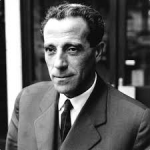
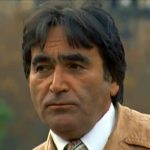 As Hitler’s vicious plan to wipe out the Jewish people started to come together, many Jewish people found their lives ripped away from them, and then, found themselves in the ghettos…if they were lucky, or the “work” camps…if they weren’t. Eventually the plan was to move all the Jews to the camps, or to transport them into the woods and shoot them. Once people were moved into the camp, there was pretty much one way out of there…death. The people dreamed of escaping the camps, but it was futile…until April 10, 1944.
As Hitler’s vicious plan to wipe out the Jewish people started to come together, many Jewish people found their lives ripped away from them, and then, found themselves in the ghettos…if they were lucky, or the “work” camps…if they weren’t. Eventually the plan was to move all the Jews to the camps, or to transport them into the woods and shoot them. Once people were moved into the camp, there was pretty much one way out of there…death. The people dreamed of escaping the camps, but it was futile…until April 10, 1944.
Rudolf Vrba and Alfred Wetzler came from the same hometown of Trnava in Slovakia. Being from the same town, they knew they could trust each other. The two men were determined to escape from Auschwitz so they could somehow let the rest of the world know what was going on there. Every day, they probed Auschwitz for weaknesses. While they searched, they were formulating escape plans. Day after day they rejected plans that they knew would only get them killed, and spoil their chances of completing their mission to save their people. Finally, one day, Fred Wetzler approached Rudi Vrba with a plan that seemed plausible. For the first time, they felt like they had a chance to succeed.
Fred told Rudolf about a pile of wooden planks stacked outside the camp perimeter waiting to be used for construction of a new facility. Fred said he knew of four prisoners planning to hide in a cavity in the middle of the wood pile. The plan was to wait for the SS guards to conclude a mandatory three-day search, and then make their escape and head south toward Slovakia. It was risky, but a few days later the plan went off without a hitch…at least the escape did. The initial strategy planned by the four prisoners, of hiding in the wood planks had worked, and they got away, but a few days later the four prisoners were caught in the village south of the camp. Rudi and Fred were worried that the four prisoners would reveal the method of their escape to the SS, but to their credit, they kept silent.
The secret of the cavity in the stack of planks stayed a secret, and a couple of weeks later, Fred and Rudi decided to attempt the same escape plan themselves. Their escape was far more successful than the escape of the first four prisoners. Once they were out of Auschwitz, Fred and Rudi had roughly 80 miles of Nazi occupied Poland ahead of them before the reached Slovakia. Their journey wasn’t a straightforward trip. They got lost and wandered around a village called Bielsko. It took them all night to find their way out and then in broad daylight, they had no choice to ask for help. They knocked on the door of a house and a woman, knowing that they were on the run, let them in and fed them. Then later that night, she gave them money, and told them how to escape through the mountains.
Of course, their journey was not without it troubles. At one point, they crossed paths with a German patrol. A gun shot sent them scrambling for cover. They heard dogs howling, and as they were running they came upon a stream. It would save them in the end. The water hid their scent, and while the water was freezing, they crossed the stream, and escaped. More strangers helped them along their journey, and against all odds, the two men made it to the Polish-Slovak borer.
On April 21st, 1944, fourteen days after they emerged from the stack of planks, Rudi Vrba and Fred Wetzler reached Slovak soil. Once inside Slovakia, they met yet another sympathetic peasant who brought them to a prominent doctor in the town of Cadca. The doctor listened to their story and said, “Tomorrow I’ll take you to the leaders of the Jewish community in Zilina. They’ll know what’s best to do.” For the rest of his life, Rudolf Vrba, who had escaped from Auschwitz determined to warn the world about the death factory before another train load of Jews could be shipped there, wished the doctor had been right.
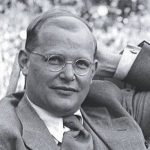 I think we have all thought that the German people were in agreement with the Nazis, but there were, in fact, many German people who fought hard for the other side. One such person who was active in the German resistance was Dietrich Bonhoeffer, who was a Protestant Lutheran Pastor and theologian. He hated Nazism and Hitler’s horrific ideas, and his strong hatred of these things brought him to a place of knowing that he had to do something…anything to stop the murderous regime.
I think we have all thought that the German people were in agreement with the Nazis, but there were, in fact, many German people who fought hard for the other side. One such person who was active in the German resistance was Dietrich Bonhoeffer, who was a Protestant Lutheran Pastor and theologian. He hated Nazism and Hitler’s horrific ideas, and his strong hatred of these things brought him to a place of knowing that he had to do something…anything to stop the murderous regime.
Bonhoeffer was born February 4, 1906 in Breslau, Germany. His family were not religious, but had a strong musical and artistic background. From his childhood days, Bonhoeffer displayed great musical talent, and the pursuit of music was important to him throughout his life. As he grew, I’m sure his family had great plans for his musical future…hoping for him to be a famous musician. When Bonhoeffer turned 14, he announced that he wanted to train and become a priest…a revelation that completely shocked his family.
Despite their displeasure at his announcement, Bonhoeffer attended the University of Berlin, graduating in 1927 with a doctorate in theology for his influential thesis, Sanctorum Communio, which means Communion of Saints. After his graduation, Bonhoeffer spent time in Spain and America. This was likely a good thing, because it gave him a wider outlook on life and helped him move from academic study to a more practical interpretation of the Gospels. He became quite interested in the concept of the Church’s involvement in social justice and protection of those who were oppressed. His wide travels also encouraged a greater interest in ecumenism, which is the outreach to other churches.
At the age of 25, Bonhoeffer was ordained as a priest. Because the early 30’s were a period of great upheaval in Germany, with the instability of Weimar Germany and the mass unemployment of the Great Depression leading to the election of Adolf Hitler in 1933. Hitler was elected as Chancellor in January 1933. He was very charismatic, and therefore, widely welcomed by most of the German people, including large parts of the church, but Bonhoeffer saw through the façade, and remained a firm opponent of Hitler’s philosophy.
Two days after Hitler’s election as Chancellor in Jan 1933, Bonhoeffer made a radio broadcast criticizing Hitler, and in particular the dangers of the idolatrous cult of the Fuhrer. The radio broadcast was almost immediately cut off. Apparently, Hitler already had a large amount of control of the information people received. Being an opponent of Hitler in those days was not looked upon favorably, and unfortunately, they did not have the freedom of speech that we enjoy in the United States.
Many people and even churches were fooled by Hitler, and before they realized it, they had lost the right to do anything about it. Bonhoeffer tried to organize the Protestant Church to reject the Nazi ideology, but they did not listen so he had to breakaway from the church where he was ordained. In April 1933, The Confessing Church which Bonhoeffer helped form with Martin Niemoller, was born. The Confessing Church sought to stand in contrast to the Nazi-supported, German Christian movement. Bonhoeffer felt disillusioned by the weakness of the church and opposition, and in the autumn of 1933, he took a two-year appointment to a German-speaking Protestant church in London.
After two years in London, Bonhoeffer returned to Berlin. He felt like he should be with his native country and  share in its struggles, even if it looked like there was no hope. Shortly after his return, one leader of the Confessing Church was arrested and another fled to Switzerland. Bonhoeffer’s authorization to teach revoked in 1936. He could not teach after being denounced as a pacifist and enemy of the state. Things grew steadily worse, and finally, because of his opposition to the Nazi regime, Bonhoeffer was arrested. He was “sentenced” to death and on April 9, 1945, was executed at the Flossian concentration camp. It was the last month of the war. He had almost survived. He remains an important symbol of opposition to Hitler, and his views on Christianity continue to be influential.
share in its struggles, even if it looked like there was no hope. Shortly after his return, one leader of the Confessing Church was arrested and another fled to Switzerland. Bonhoeffer’s authorization to teach revoked in 1936. He could not teach after being denounced as a pacifist and enemy of the state. Things grew steadily worse, and finally, because of his opposition to the Nazi regime, Bonhoeffer was arrested. He was “sentenced” to death and on April 9, 1945, was executed at the Flossian concentration camp. It was the last month of the war. He had almost survived. He remains an important symbol of opposition to Hitler, and his views on Christianity continue to be influential.
 Nine parachutes floated silently to the Earth on a calm February 27, 1943. Their mission was to blow up a Nazi-controlled heavy water plant in Vemork, Norway. The men had been specially trained by British Special Operations, and they had been chosen to carry out this vital mission. Heavy water was a crucial element in the production of plutonium, an ingredient for the nuclear bomb Hitler’s scientists were feverishly attempting to build. The plant at Vemork was the only such facility in the world.
Nine parachutes floated silently to the Earth on a calm February 27, 1943. Their mission was to blow up a Nazi-controlled heavy water plant in Vemork, Norway. The men had been specially trained by British Special Operations, and they had been chosen to carry out this vital mission. Heavy water was a crucial element in the production of plutonium, an ingredient for the nuclear bomb Hitler’s scientists were feverishly attempting to build. The plant at Vemork was the only such facility in the world.
The plant at Vemork was heavily fortified, and it remoteness made it impervious to bombing. It could only be destroyed on site, and for the men, parachuting in was just the beginning of the mission. The men would also be required to scale a 500-foot-high cliff in the dead of winter, and infiltrate a heavily guarded basement laboratory. The nine Norwegians, led by 23 year old Joachim Ronneborg, did just that, successfully detonating  explosives that shut down the facility. The destruction of the Vemork plant was crucial in Albert Speer’s decision to halt attempts to produce a Nazi atomic weapon.
explosives that shut down the facility. The destruction of the Vemork plant was crucial in Albert Speer’s decision to halt attempts to produce a Nazi atomic weapon.
The United States began early nuclear research first, but Germany was moving forward with its own nuclear energy research and atomic bomb program. In April 1939, Germany began a secret program called the Uranverein or “Uranium Club.” The German program recruited some of the top scientific minds in Germany, including recent Nobel Prize winner Werner Heisenberg. It was led by physicist Kurt Diebner. The Uranium Club was getting dangerously close to making an atomic weapon, and it had to be stopped. Hitler could not win this one.
Had nine Norwegian soldiers not trekked into the cold on that day in February 1943, it is hard to say how much 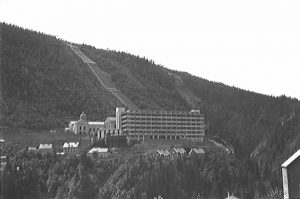 longer the war might have lasted, or how much destruction might have been carried out. Their brave and selfless act saved many lives to be sure. At the very least, Operation Gunnerside should be recognized as one of the most successful SOE missions during World War II. Ronneborg and his squad fully expected this mission to be a one-way trip. It never occurred to them that they might survive. Nevertheless, the operation brought with it zero casualties, and temporarily destroyed the Germans’ single source of heavy water at the time. Ronneborg later commented that “London could have suffered a different fate and ended up ‘looking like Hiroshima’ if his team had failed.”
longer the war might have lasted, or how much destruction might have been carried out. Their brave and selfless act saved many lives to be sure. At the very least, Operation Gunnerside should be recognized as one of the most successful SOE missions during World War II. Ronneborg and his squad fully expected this mission to be a one-way trip. It never occurred to them that they might survive. Nevertheless, the operation brought with it zero casualties, and temporarily destroyed the Germans’ single source of heavy water at the time. Ronneborg later commented that “London could have suffered a different fate and ended up ‘looking like Hiroshima’ if his team had failed.”
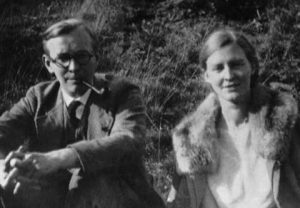 Mildred Fish was an American-German literary historian, translator, and later, a German Resistance fighter in Nazi Germany. They fell in love and married, moving to Germany right after. She met her future husband, Arvid Harnack in 1926. Arvid was a grad student at the University of Wisconsin-Milwaukee, and a Rockefeller Fellow from Germany. In Germany, Mildred worked in education and Arvid secured a position with the Reich Economic Ministry. Throughout the 1930s, Mildred and Arvid, became increasingly alarmed by Hitler’s rise to power. They could see that he had ulterior
Mildred Fish was an American-German literary historian, translator, and later, a German Resistance fighter in Nazi Germany. They fell in love and married, moving to Germany right after. She met her future husband, Arvid Harnack in 1926. Arvid was a grad student at the University of Wisconsin-Milwaukee, and a Rockefeller Fellow from Germany. In Germany, Mildred worked in education and Arvid secured a position with the Reich Economic Ministry. Throughout the 1930s, Mildred and Arvid, became increasingly alarmed by Hitler’s rise to power. They could see that he had ulterior 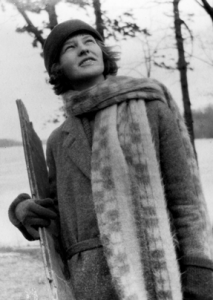 motives. They communicated with a close circle of associates who believed communism and the Soviet Union might be the only possible stumbling block to complete Nazi tyranny in Europe.
motives. They communicated with a close circle of associates who believed communism and the Soviet Union might be the only possible stumbling block to complete Nazi tyranny in Europe.
When Mildred came to the United States for a lecture tour in 1937, her family begged her to relocate permanently, but she refused and resumed her life in Germany. I suppose she thought she could be of better assistance there than in the United States. When war was declared in 1941, she did not leave with other Americans.  They couldn’t leave, because by then, Mildred and Arvid were involved with a communist espionage network known by the Gestapo as “The Red Orchestra”. The ring, which provided important intelligence to the USSR, was compromised and the members were arrested. I’m sure they knew this was a death sentence for them.
They couldn’t leave, because by then, Mildred and Arvid were involved with a communist espionage network known by the Gestapo as “The Red Orchestra”. The ring, which provided important intelligence to the USSR, was compromised and the members were arrested. I’m sure they knew this was a death sentence for them.
After they were tried as traitors, Arvid was sentenced to death and executed on December 22, 1942. Mildred was given a six year sentence, but Hitler refused to endorse her punishment. As only a dictator can, he insisted on a retrial, after which she was condemned on January 16, 1943. She was beheaded by guillotine at Plotzensee Prison on February 16, 1943. She was the only American female executed on the orders of Adolf Hitler. Because of her connection to possible communist sympathies and post-war McCarthyism, her story is virtually unknown in the United States.
 One of the criminal acts of Hitler and the Third Reich was to confiscate the riches of the countries they were occupying. It was not the worst of the atrocities, but it was up there. By confiscating the food and money of these countries, the Nazis left the people in those countries broke and starving. Even as the Third Reich began to know they were losing the war, there was hope that they would go into hiding, re-group, and rise again. If that was going to happen, they were going to need money, and the only way to insure that was to begin mass confiscation and hiding of the riches of these nations.
One of the criminal acts of Hitler and the Third Reich was to confiscate the riches of the countries they were occupying. It was not the worst of the atrocities, but it was up there. By confiscating the food and money of these countries, the Nazis left the people in those countries broke and starving. Even as the Third Reich began to know they were losing the war, there was hope that they would go into hiding, re-group, and rise again. If that was going to happen, they were going to need money, and the only way to insure that was to begin mass confiscation and hiding of the riches of these nations.
Lake Toplitz was located in a very remote area of Austria, southeast of Salzburg. In modern day Austria, the area is appropriately called The Dead Mountains. Basically, if you’re looking for somewhere to get away from it all, Lake Toplitz is a good choice. During the war, the lake’s remoteness made it the perfect place for the Nazis to test weapons…including torpedoes. It was also one of the places the Nazi elite fled to when it came time to make their last stand. That fact, in and of itself, makes it a logical place to hide funds for a future comeback of the Third Reich.
In 1945, Hitler’s Germany had only a few more weeks before their horrific reign ended, found themselves stuck in the middle, being crushed by the Russian tanks coming in from the east, and the Americans and British from the north. As their fronts collapsed, the Nazis made several efforts to hide their stolen wealth and treasure. The practice of hiding the wealth is well known, because a lot of that hidden wealth has already been discovered in mines, underground bunkers, and hastily buried fortifications.
Everyone seemed to be looking for the buried treasure left by the Nazis. At one time, a pair of treasure hunters announced they found the location of a buried German armored train in the hills of Poland. Their claim seemed 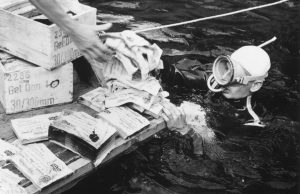 possible, so a search was held. In the end, it was determined that the “train” was nothing more than an ice covered rock formation. Still, the possibility of a treasure train is very real. Unfortunately, the big news about the “train” caused such a stir that another find was all but lost to the world.
possible, so a search was held. In the end, it was determined that the “train” was nothing more than an ice covered rock formation. Still, the possibility of a treasure train is very real. Unfortunately, the big news about the “train” caused such a stir that another find was all but lost to the world.
There had been stories about plunder the Nazis may have hidden in the cold, deep waters of Lake Toplitz, as the Allies closed in. Reports came out that the lake held iron boxes full of counterfeit British currency and the printing plates to make more…a part of Hitler’s Operation Bernhard, which was a plan to wreck the British economy by flooding the world with fake bank notes. That report turned out to be true, when dive crews recovered several chests stuffed with counterfeit cash in 1959. The divers reported there were more chests stuck in the mud, but they were too deep to recover. More stories about Nazi plunder at the bottom of Lake Toplitz surfaced. The nephew of one German officer made the claim that the Nazis sank chests loaded with gold into the lake. Plates from the lost fabled Russian Imperial Amber Room, which had also been rumored to be on the Nazi gold train in Poland, are also thought by others to be on the bottom of the icy lake. Along with treasure there are stories of weapons components, ammunition, rocket fuel, and maps showing the locations of even more stolen Nazi loot.
There have been many attempts to salvage treasure from the bottom of the lake over the years, with most of them ending in death. The lake is deep and cold, and has many tangled trees and branches that can trap a person. In 1983 the Austrian government declared the lake had been completely searched and anything of value removed. That turned out to be a fake story designed to discourage treasure hunters. Biologists studying the lake have turned up more boxes of counterfeit currency, rocket parts, weapons, mines and even a torpedo 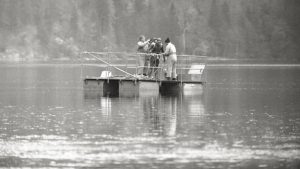 since the government report. Later, photographs from a submerged bunker surfaced, showing boxes with Cyrillic lettering. These are what led to the speculation that the boxes might contain panels from the Amber Room. The exact location of the bunker has been hidden from the public.
since the government report. Later, photographs from a submerged bunker surfaced, showing boxes with Cyrillic lettering. These are what led to the speculation that the boxes might contain panels from the Amber Room. The exact location of the bunker has been hidden from the public.
I expect that people will continue to try to find the treasures, even though claims will most likely be laid upon them immediately after they are located. The people who find them will probably only get the recognition for the find, rather than the right to keep the treasure. Maybe with an attorney who is good enough, they will walk away with a finders fee.
 I was thinking about Sir Nicholas Winton, who saved 669 Jewish children from the brutal activities, and almost certain death that was being dealt out by Hitler during World War II. Of course, Sir Winton wasn’t the only person who stepped up to help wage their own battle against the Third Reich. Many people in Nazi occupied areas took in families in desperate need. When word is the deportations to the ghettos came down, some parents had to make the horrible choice to give their children to friends and neighbors to “hide” them in plain site, raising them as their own, and everyone hoping to be able to return them to their own parents after the war. The problem was that so many of the parents were killed in the camps.
I was thinking about Sir Nicholas Winton, who saved 669 Jewish children from the brutal activities, and almost certain death that was being dealt out by Hitler during World War II. Of course, Sir Winton wasn’t the only person who stepped up to help wage their own battle against the Third Reich. Many people in Nazi occupied areas took in families in desperate need. When word is the deportations to the ghettos came down, some parents had to make the horrible choice to give their children to friends and neighbors to “hide” them in plain site, raising them as their own, and everyone hoping to be able to return them to their own parents after the war. The problem was that so many of the parents were killed in the camps.
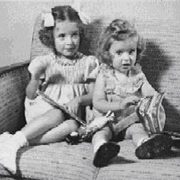
After the war was over, many of these children did not remember their parents. They were too young when they were given to people to care for. That created a new and almost more difficult situation. Some of the foster parents had fallen in love with the children in their care, and the viler knew no other family. Still, they were not their children. It was a heart wrenching situation. The other problem was that due to bombings, many of the homes housing these “hidden” children were gone, and they had no way to let anyone know where they had gone. That made it even more difficult to return the children. And some people couldn’t bear to part with the children anyway. 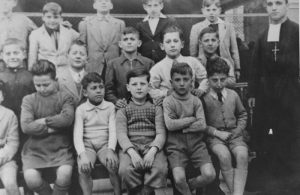 That left parents devastated and without recourse.
That left parents devastated and without recourse.
Some children were reunited with their parents quickly and some took years…if ever. I wonder about the ones that took years, because of the immense loss they must have felt over so much lost time. You just can’t get that time back, and you can’t change whatever the children endured in their lives. Everyone just had to let go of the past and go forward, as best they could. There was no way to go back to their pre-war lives. Each had changed, some were forever missing, and some were lost to the horrific hatred that was Hitler’s Third Reich.

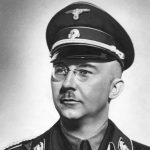 Anyone who knows much about World War II, and the Holocaust, knows the name Hermann Göring, who was Hitler’s second in command. We know names like Heinrich Himmler, Joseph Goebbels, Adolf Eichmann, and of course, Adolf Hitler. These men were among the worst of the evil Third Reich. Göring created the Gestapo as one of his first acts as a cabinet minister. He ceded it to Heinrich Himmler in 1934. Following the establishment of the Nazi state, Göring amassed power and political capital to become the second most powerful man in Germany. He was appointed commander-in-chief of the Luftwaffe…the Nazi air force, a position he held until the final days of the regime. He was later convicted of his crimes, but before he could be hanged, he committed suicide.
Anyone who knows much about World War II, and the Holocaust, knows the name Hermann Göring, who was Hitler’s second in command. We know names like Heinrich Himmler, Joseph Goebbels, Adolf Eichmann, and of course, Adolf Hitler. These men were among the worst of the evil Third Reich. Göring created the Gestapo as one of his first acts as a cabinet minister. He ceded it to Heinrich Himmler in 1934. Following the establishment of the Nazi state, Göring amassed power and political capital to become the second most powerful man in Germany. He was appointed commander-in-chief of the Luftwaffe…the Nazi air force, a position he held until the final days of the regime. He was later convicted of his crimes, but before he could be hanged, he committed suicide.
In July 1941, Hermann Göring, writing under instructions from Hitler, had ordered Reinhard Heydrich, SS general and Heinrich Himmler’s number-two man, to submit “as soon as possible a general plan of the administrative, material, and financial measures necessary for carrying out the desired final solution of the Jewish question.” This was the plan to murder millions of Jews, Gypsies, and Jehovah’s Witnesses. The meeting to discuss the plan that was later carried out was held on January 20, 1942. These evil men tortured and murdered all those people, with no remorse until the Allies finally put a stop to it all.
Many of the children and other relatives of the Nazi regime agreed with and even carried on the work after the original monsters were dead or imprisoned, but there were some who were so sickened by the things their monster relatives were doing that they shunned it at every turn. One such person was Albert Göring, the younger, and little-known brother of Reichsmarschall Hermann Göring, the notorious Nazi leader and war criminal, who was the exact opposite of his older brother. Albert was a Holocaust hero. He worked hard to save hundreds of Jews and political dissidents who were being persecuted by the very regime his brother had helped to create. With great personal risk. Albert was as anti-Nazi as he could be, and he raised his family the same 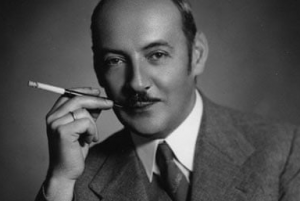
 way. Bettina Goering, who was Hermann Göring’s great niece, apparently has similar features to Hermann Göring. That always bothered her. So much so, that she left Germany and immigrated to Santa Fe, New Mexico. She and her brother were so afraid that the “monster” gene was hereditary, that the both chose voluntary sterilization, so they would not bring any more Görings into this world. A drastic measure to be sure, but it was a decision they both knew they could live with.
way. Bettina Goering, who was Hermann Göring’s great niece, apparently has similar features to Hermann Göring. That always bothered her. So much so, that she left Germany and immigrated to Santa Fe, New Mexico. She and her brother were so afraid that the “monster” gene was hereditary, that the both chose voluntary sterilization, so they would not bring any more Görings into this world. A drastic measure to be sure, but it was a decision they both knew they could live with.
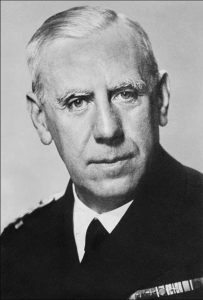 Wilhelm Canaris was born January 1, 1887, in Aplerbeck, Germany. The Germans celebrated him as a war hero during the First World War, for his many exploits as a submarine captain. Canaris later became a top military spy for Germany. He was appointed to head the Abwehr Military Intelligence in 1935. It seemed a fitting next step in a celebrated military officer’s career, but Canaris was not exactly what he seemed to be on the outside. I suppose that as a spy, that makes sense. Spies, by definition have to live life on the fringes, with few people really allowed to know the real man. Canaris had the added complication of being a double agent.
Wilhelm Canaris was born January 1, 1887, in Aplerbeck, Germany. The Germans celebrated him as a war hero during the First World War, for his many exploits as a submarine captain. Canaris later became a top military spy for Germany. He was appointed to head the Abwehr Military Intelligence in 1935. It seemed a fitting next step in a celebrated military officer’s career, but Canaris was not exactly what he seemed to be on the outside. I suppose that as a spy, that makes sense. Spies, by definition have to live life on the fringes, with few people really allowed to know the real man. Canaris had the added complication of being a double agent.
Canaris…the man behind the Nazi Abwehr spy network, was a shrewd, brilliant spymaster who managed to keep control of the Abwehr. He also outwitted Himmler at almost every turn, while joined with other high-ranking German officers in a dangerous plot to eliminate Hitler and make a separate peace with the Allies. I believe there were many German people, and military personnel who did not agree with Hitler, and some were brave enough to do something about it.
Admiral Wilhelm Canaris is the number one mystery man of the Nazi regime under Hitler to this day. Historians have argued his value for years. I’m sure many of them were convinced that he was actually working with the Nazis, instead of against them from the inside. Canaris stayed so tightly in his shell, probably a means of self-preservation, that he didn’t talk much, but was rather a great listener. Almost everybody who knew him didn’t really know exactly what his purpose and intentions were. The ability to be a good listener is a vital part of being a spy…as is the ability to keep your mouth shut about things. Rattling off too much information in a spy network, can get a spy killed.
Canaris, on the one hand, was the great protector of the German opposition against Hitler. On the other hand, he was the one who prepared all the big expansion plans for the acts and crimes of Hitler in the Third Reich. He had to protect and motivate the opposition members, all of whom were eager to fight against Hitler, and it had to appear that he was hunting them as conspirators. It was one of the many difficult contradictions Canaris was forced to live with to stay in control of the Abwehr. There were, of course, ugly sides to his job too. Canaris was an eye-witness to the killing of civilians in Poland. At Bedzin, SS troops pushed 200 Jews into a synagogue and then set it on fire. They all burned to death. Canaris was in shock. On September 10, 1939, he had to travel to the front to watch the German Army in action. This also gave him the opportunity to meet with his intelligence officers, who told him of insane massacres. Two days later, Canaris went to Hitler’s headquarters train…the Amerika, in Upper Silesia, to protest. He first saw General Wilhelm Keitel, Chief of the Armed Forces High Command. “I have information,” Canaris told Keitel, “that mass executions are being planned in Poland and that members of the Polish nobility and the clergy have been singled out for extermination.” He apparently had no idea of Hitler’s real plan for the “final solution.”
Canaris told Keitel, “The world will one day hold the Wehrmacht responsible for these methods since these things are taking place under its nose.” Keitel told Canaris to take the matter no further. I’m sure that Keitel made it clear that Canaris’ life depended on keeping his mouth shut about these things. Canaris did as he was told, or so the Nazis thought. Before long, however, the Vatican began to receive regular, detailed reports of Nazi atrocities in Poland. The information had been gathered by agents of the Abwehr by order of Canaris, who passed them on to Dr Josef Muller, who was a devout Catholic and a leading figure in the Catholic resistance to Hitler. Muller, in turn, got the reports safely to Rome. Canaris sent another of his colleagues, Pastor Dietrich Bonhoeffer, on a flight to Sweden to meet secretly with Bishop Bell of Chichester. Bonhoeffer told Bell of the crimes his nation was committing, and assured Bell of growing resistance in Germany to such acts. In March 1943, Canaris personally flew to Smolensk to plan Hitler’s assassination with conspirators on the staff of Army Group Center.
The efforts of Canaris were later made clear during the Nuremburg Trials, but it was too late for Canaris. He had made strenuous efforts in trying to put a stop to the crimes of war and genocide committed by Hitler. Admiral Canaris, along with his second-in-command, Hans Oster, actually helped the Allies while supervising all German espionage, counterespionage, and sabotage. He revealed almost all of the important German strategy and battle plans to the Allies. From Hitler’s impending western offensive against the Low countries and France to Hitler’s plan to invade Britain. Canaris also misled Hitler into believing that the Allies would not land at Anzio in 1943. The work Canaris was doing against became evident to Hitler only after the conspirators attempted to kill him in July 1944. Canaris and many others were arrested. The principal prisoners were confined at Gestapo cellars at Prinz Albrechtstrasse. Canaris was kept in solitary confinement, in chains. Canaris’ cell door was permanently open, and the light burned continually, day and night. He was given only one third of the normal prison rations. As winter set in, his starved body suffered cruelly from the cold. He was also humiliated by being forced to do menial jobs, such as scrubbing the prison floor, the SS men mocking him.
On February 7, 1945, Canaris was brought to the Flossenburg concentration camp. His treatment did not improve there. He was still treated badly, and often endured having his face slapped by the SS guards. Nevertheless, Canaris baffled the SS interrogators with one ruse after another, and he denied all personal complicity in the conspiracy. He never betrayed his fellow participants in the Resistance Movement. During the last weeks of the Nazi era, SS Obersturmbannführer Walter Huppenkothen and Sturmbannführer Otto Thorbeck were sent to Flossenburg to eliminate Canaris and the other resistance figures. A bogus “trial” was held, after which the men hung the victims. A few more days and the war would have been over, but in the gray morning hours of April 9, 1945, gallows were erected hastily in the courtyard for Wilhelm Canaris, Dietrich Bonhoeffer, Major General Hans Oster, Judge Advocate General Carl Sack, Captain Ludwig Gehre. The men were ordered to remove their clothing and were led down the steps under the trees to the secluded place of execution before hooting SS guards. Naked under the scaffold, they were allowed to pray one last time, then they were hanged, and their corpses left to rot. Two weeks later, on April 23, 1945, the camp was liberated by American troops.


Admiral Wilhelm Canaris was a true hero, in the face of unbelievable odds. I’m sure he know that he would get caught at some point, and I’m equally sure that he knew he would be killed, when he was caught. Nevertheless, he said of his actions, “I die for my fatherland. I have a clear conscience. I only did my duty to my country when I tried to oppose the criminal folly of Hitler.” He knew that his death was worth fighting the evil that was the Third Reich. I only wish that he had survived so that he could have been properly honored.
 Every United States Presidential election brings heated debates, and many arguments from both sides of the aisle. I’m sure it is the same in most other nations, who have the opportunity to vote too. Being an unapologetic Conservative, it is my belief that the less the government controls the citizens the better. Socialism and Fascism are both forms of government control, and while some people think these are great, they ultimately find out that what the government gives, the government can also take away. This was what we saw with Adolf Hitler. He came into office as an elected official, and before long, he changed everything for the German people, and in many ways the world, especially the Jewish people, Gypsies, and any other groups he disagreed with. The people were fooled into thinking he was a great man, until it was too late.
Every United States Presidential election brings heated debates, and many arguments from both sides of the aisle. I’m sure it is the same in most other nations, who have the opportunity to vote too. Being an unapologetic Conservative, it is my belief that the less the government controls the citizens the better. Socialism and Fascism are both forms of government control, and while some people think these are great, they ultimately find out that what the government gives, the government can also take away. This was what we saw with Adolf Hitler. He came into office as an elected official, and before long, he changed everything for the German people, and in many ways the world, especially the Jewish people, Gypsies, and any other groups he disagreed with. The people were fooled into thinking he was a great man, until it was too late.
Similar to Adolf Hitler, Italian Fascist leader Benito Mussolini did not become the dictator of a totalitarian regime overnight. Mussolini started out as a schoolteacher and an avowed socialist. After World War I he became a leader of the nascent Fascist movement. Like much of Europe, Italy was in the middle of great social turmoil following World War I. During the turmoil, paramilitary groups and street gangs frequently clashed over their competing ideas for the new political order. A close confidant of Mussolini formed a Fascist paramilitary group, known as the Blackshirts or Squadristi, and because Mussolini was their leader, the gangs found that government fears of a communist revolution allowed them to operate without state intervention. Apparently, the people thought Socialism and Fascism were better than Communism. By 1921, Mussolini had been elected to parliament as the leader of the growing National Fascist Party.
Soon after Mussolini’s election…the party’s Chosen One…armed Blackshirts marched on Rome, demanding that the king install Mussolini as Prime Minister. Why the king allowed this to happen, is beyond me, but in a decision that utterly changed the course of Italian and European history, King Victor Emmanuel III ignored Prime Minister Luigi Facta’s pleas that he declare martial law, leading to Facta’s resignation and Emmanuel’s invitation to Mussolini to form a new government. It was a move that was completely insane. The Fascists and their moderate allies began dismantling Italy’s democratic institutions. Mussolini was proclaimed dictator for a year, like that was going to be all it was, and increasingly merged his party and its paramilitary wing with the state and the official military. He also undertook a program of privatizations and anti-union legislation in order to assure industrialists and aristocrats that fascism would protect them from socialism. Before long, the Italian government didn’t even resemble its former self.
Still, many Fascists felt Mussolini was moving too slowly, so they took matters into their own hands. In 1924, assassins with ties to Mussolini killed socialist leader Giacomo Matteotti, leading most of the parliamentary opposition to boycott Mussolini’s legislature. The Fascists felt that their moment had come. On December 31, 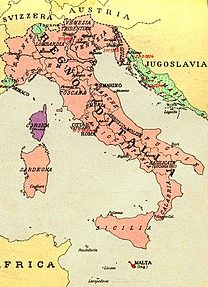 they issued an ultimatum to Mussolini. Three days later on January 3rd, he addressed the remainder of parliament, declaring “I, and I alone, assume the political, moral, and historical responsibility for all that has happened,” obliquely referring to the assassination of Matteotti. In doing this, Mussolini dared prosecutors and the rest of Italy’s democratic institutions, as well as the king, to challenge his authority. It was their last chance, but no one opposed him. Thus, from 1925 onward, Mussolini was able to operate openly as a dictator, styling himself Il Duce (meaning The Leader) and fusing the state and the Fascist Party. For the next two decades, suppression and brutality became the norm, culminating in Mussolini’s alliance with Nazi Germany and World War II. I heard it said that, “You can vote yourself into Socialism, but you will have to shoot your way out of it.” It is a good warning for all of us as we approach the next Presidential election. We have a number of candidates who want Socialism, and it would be a dire mistake to allow that to happen to our free, Capitalist nation. People don’t always understand how important our elections are.
they issued an ultimatum to Mussolini. Three days later on January 3rd, he addressed the remainder of parliament, declaring “I, and I alone, assume the political, moral, and historical responsibility for all that has happened,” obliquely referring to the assassination of Matteotti. In doing this, Mussolini dared prosecutors and the rest of Italy’s democratic institutions, as well as the king, to challenge his authority. It was their last chance, but no one opposed him. Thus, from 1925 onward, Mussolini was able to operate openly as a dictator, styling himself Il Duce (meaning The Leader) and fusing the state and the Fascist Party. For the next two decades, suppression and brutality became the norm, culminating in Mussolini’s alliance with Nazi Germany and World War II. I heard it said that, “You can vote yourself into Socialism, but you will have to shoot your way out of it.” It is a good warning for all of us as we approach the next Presidential election. We have a number of candidates who want Socialism, and it would be a dire mistake to allow that to happen to our free, Capitalist nation. People don’t always understand how important our elections are.

 During his reign, Hitler was determined to rid the world of those people he decided were of an inferior race…basically anyone who was not blonde haired, blue-eyed, and fair skinned. It was a seriously strange idea considering that Hitler had dark hair, and it is rumored that Hitler may have had both Jewish and African ancestry. I don’t suppose he would have liked knowing that much, or maybe he knew and didn’t care.
During his reign, Hitler was determined to rid the world of those people he decided were of an inferior race…basically anyone who was not blonde haired, blue-eyed, and fair skinned. It was a seriously strange idea considering that Hitler had dark hair, and it is rumored that Hitler may have had both Jewish and African ancestry. I don’t suppose he would have liked knowing that much, or maybe he knew and didn’t care.
Hitler had a plan in mind to create the “perfect” race. His plan was two-fold. Most people know about the Holocaust, and the mass killing of Jews, Gypsies, and other “undesirable” races, by starvation, beatings, and most notably, the gas chambers. It is not known exactly how many people were killed, but the number is estimated at 6 million Jews, and as many as 11 million other groups. It was horrific, but it was not the only plan Hitler had.
His other plan was the Lebensborn, which translates as “wellspring of life” or “fountain or life.” The Lebensborn project was one in which women…who were of the Aryan race, a historical race concept which emerged in the period of the late 19th century and mid-20th century to describe people of Indo-European heritage as a racial grouping. Heinrich Himmler founded the Lebensborn project on December 12, 1935, the same year the Nuremberg Laws outlawed intermarriage with Jews and others who were deemed inferior. In the beginning, the Lebensborn children were taken to SS nurseries. But in order to create a “super-race,” the SS transformed these nurseries into “meeting places” for “racially pure” German women who wanted to meet and have children with SS officers. The idea was that they were doing something great for “the cause.” The children born in the Lebensborn nurseries were then taken by the SS. The Lebensborn provided support for expectant mothers, we or unwed, by providing a home and the means to have their children in safety and comfort. For decades, Germany’s birthrate had been decreasing, and Himmler’s goal was to reverse the decline and increase the Germanic/Nordic population of Germany to 120 million. Himmler encouraged SS and Wermacht officers to have children with Aryan women. He believed Lebensborn children would grow up to lead a Nazi-Aryan nation. Once the children were born, the woman had the choice to marry the SS officer father, or give the child up for adoption. She was not allowed to keep the child on her own, and once she entered the Lebensborn she could not leave until the child was delivered.
Any children who were born with any defects were immediately put to death. The program had no room for any special-needs children. The children who were given up by the mothers, were usually kept at the Lebensborn for about a year before they were made available for adoption, and then only to SS or Wermacht soldiers families or members of the Nazi party. During their time in the SS nursery, they were named by Himmler. The whole purpose of this society (Registered Society Lebensborn – Lebensborn Eingetragener Verein) was to offer to young girls who were deemed “racially pure” the possibility to give birth to a child in secret. The child was then given to the SS organization which took charge in the child’s education and adoption. Both mother and father needed to pass a “racial purity” test. Blond hair and blue eyes were preferred, and family lineage had to be traced back at least three generations. Of all the women who applied, only 40 percent passed the racial purity test and were granted admission to the Lebensborn program. The majority of mothers were unmarried, 57.6 percent until 1939, and about 70 percent by 1940.
One of the most horrible sides of the Lebensborn policy was the kidnapping of children “racially good” in the eastern occupied countries after 1939. Some of these children were orphans, but it is well documented that many were stolen from their parents’ arms. These kidnappings were organized by the SS in order to take children by force who matched the Nazis’ racial criteria…blond hair and blue or green eyes. Thousands of children were taken to the Lebensborn centers in order to be “Germanized.” Up to 100,000 children may have 
 been stolen from Poland alone. In these centers, everything was done to force the children to reject and forget their birth parents. The SS nurses were told to persuade the children that they were deliberately abandoned by their parents. The children who refused the Nazi education were often beaten. Most of those who rejected Nazi principles were transferred to concentration camps, usually in Kalish in Poland, and exterminated. The others were adopted by SS families. The whole Lebensborn program was twisted. It was like growing machines who would believe and do as they were told, which is what they thought the children would grow up to do.
been stolen from Poland alone. In these centers, everything was done to force the children to reject and forget their birth parents. The SS nurses were told to persuade the children that they were deliberately abandoned by their parents. The children who refused the Nazi education were often beaten. Most of those who rejected Nazi principles were transferred to concentration camps, usually in Kalish in Poland, and exterminated. The others were adopted by SS families. The whole Lebensborn program was twisted. It was like growing machines who would believe and do as they were told, which is what they thought the children would grow up to do.

